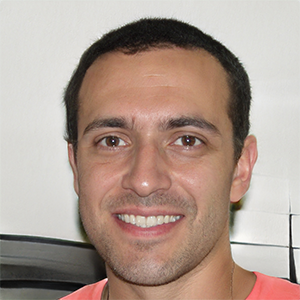Biodigital convergence, the seamless integration of biological and digital realms, is rapidly reshaping the frontiers of science and technology. This phenomenon, marked by the fusion of biological systems with digital technologies, heralds a future replete with groundbreaking opportunities and unprecedented challenges.
While the allure of enhanced human capabilities, “sustainable” environments, and revolutionary medical treatments beckons, the ethical, social, and security implications of such convergence demand rigorous scrutiny.
The Dawn of Biodigital Convergence
At the heart of biodigital convergence lies the fusion of digital technology with biological processes. Innovations range from gene-edited organisms to digital enhancements in humans, sparking debates on the very nature of life and identity. The potential for creating enhanced humans and organisms with altered ecosystems presents a future where the line between natural and synthetic becomes increasingly blurred.
The journey into biodigital convergence is not new; it has been evolving quietly yet persistently. From simple digital health trackers to sophisticated genetic editing tools like CRISPR, the boundaries between biological entities and digital apparatus have increasingly blurred.
Today, we stand at a crossroads where digital technologies can alter the very code of life, and biological processes, in turn, can enrich digital systems, creating a cyclical interdependence that defines the biodigital landscape.
The Technological Leap
The advancements in biodigital convergence are powered by significant strides in IT and biotechnology. Technologies like AI, machine learning, and synthetic biology are pushing the boundaries of what can be achieved, from precision medicine to smart agriculture. However, the acceleration of these technologies prompts questions about the sustainability of rapid innovation and the readiness of our regulatory and ethical frameworks to manage these changes.
Societal Implications
The integration of digital devices into the human body, such as brain-computer interfaces and biometric sensors, heralds unprecedented capabilities but also introduces vulnerabilities. Issues of privacy, autonomy, and security become complex when biological entities can be hacked, monitored, or controlled digitally. This raises profound questions: Do we want to live in a world where our biological functions can be manipulated or enhanced artificially? What are the risks of creating a society divided by access to biodigital enhancements?
Ethical and Security Challenges
Biodigital convergence brings forth ethical dilemmas, including concerns about eugenics, consent, and the potential for new forms of discrimination. The prospect of designing organisms or altering human traits evokes fears of unforeseen consequences and moral quandaries. Security concerns also emerge, with the potential for biodigital technologies to be weaponized or used maliciously, underscoring the need for robust governance and oversight.
Biodigital convergence stirs profound ethical debates. The potential to design life, extend human capabilities, and even alter evolutionary pathways presents moral dilemmas that challenge existing ethical frameworks. Issues of ‘playing God,' the rights of genetically modified organisms, and the long-term consequences of altering natural evolutionary processes are just the tip of the ethical iceberg.
The dual-use nature of biodigital technologies means they can be harnessed for both beneficial and nefarious purposes. The possibility of biohacking, genetic espionage, and new forms of bioterrorism necessitates robust security measures and international regulatory frameworks. Establishing global norms and governance structures to manage these risks is imperative but fraught with geopolitical complexities.
The Environmental and Health Conundrum
While biodigital convergence offers solutions for environmental sustainability and health improvements, it also poses risks to biodiversity and could lead to unforeseen health repercussions. Manipulating ecosystems or creating synthetic organisms could have irreversible impacts on natural balances, necessitating a cautious approach to deploying these technologies.
Navigating the Biodigital Future
As we stand on the brink of a biodigital era, it is imperative to engage in critical discourse on the direction and implications of this convergence. Balancing innovation with caution, and technological advances with ethical considerations, will be crucial in shaping a future that harnesses the benefits of biodigital convergence while mitigating its risks.
As we delve deeper into the biodigital era, the need for critical engagement, ethical deliberation, and proactive governance becomes paramount. Balancing the benefits of biodigital convergence against its potential risks requires a multidisciplinary approach, encompassing scientific, ethical, legal, and societal perspectives. Ensuring inclusive and informed public discourse, fostering international collaboration, and developing adaptive regulatory frameworks are essential steps in harnessing the transformative power of biodigital convergence responsibly.

Lifelong bacon junkie. Lifelong internet fanatic. Hipster-friendly travel aficionado. Twitter lover. Avid food buff. Incurable travel trailblazer.












